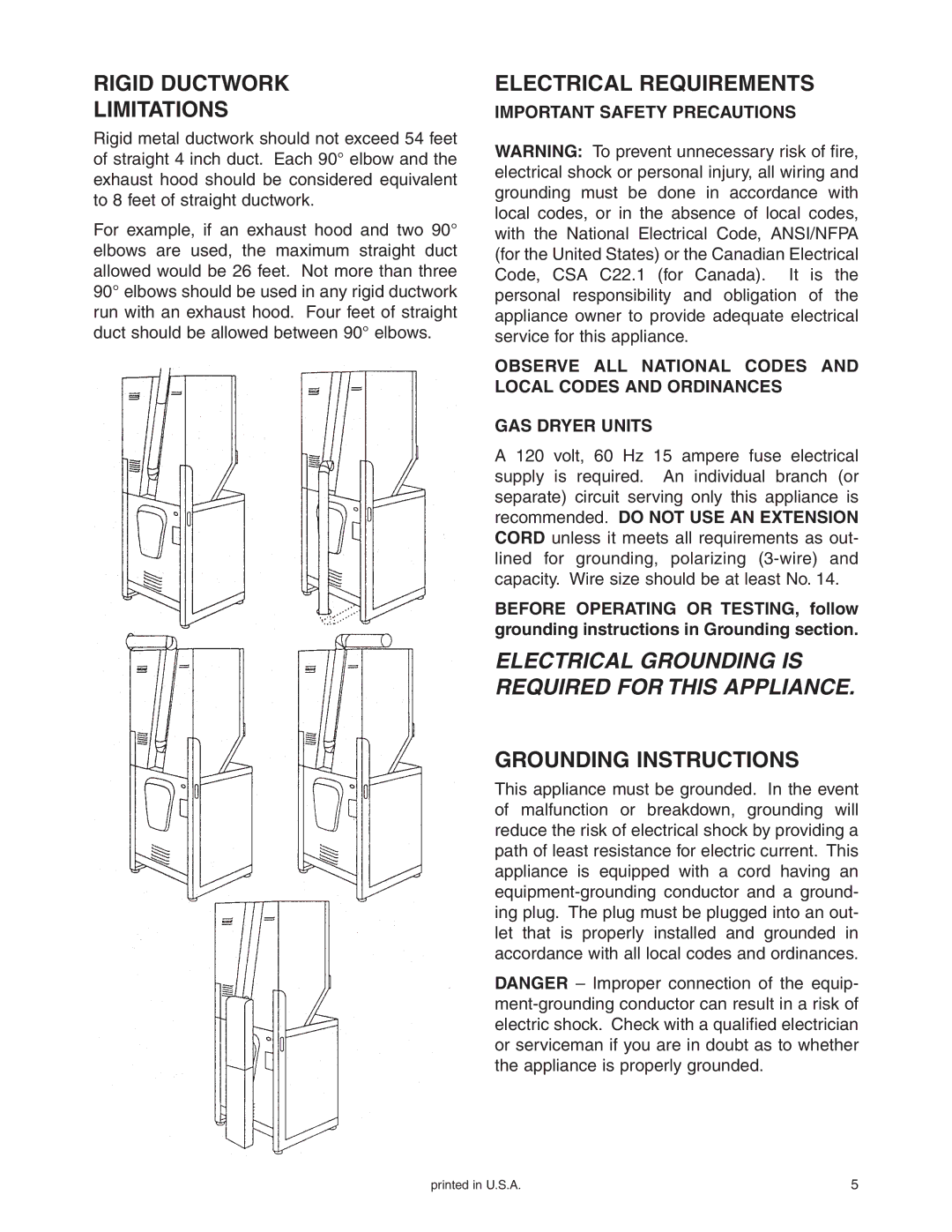
RIGID DUCTWORK
LIMITATIONS
Rigid metal ductwork should not exceed 54 feet of straight 4 inch duct. Each 90° elbow and the exhaust hood should be considered equivalent to 8 feet of straight ductwork.
For example, if an exhaust hood and two 90° elbows are used, the maximum straight duct allowed would be 26 feet. Not more than three 90° elbows should be used in any rigid ductwork run with an exhaust hood. Four feet of straight duct should be allowed between 90° elbows.
ELECTRICAL REQUIREMENTS
IMPORTANT SAFETY PRECAUTIONS
WARNING: To prevent unnecessary risk of fire, electrical shock or personal injury, all wiring and grounding must be done in accordance with local codes, or in the absence of local codes, with the National Electrical Code, ANSI/NFPA (for the United States) or the Canadian Electrical Code, CSA C22.1 (for Canada). It is the personal responsibility and obligation of the appliance owner to provide adequate electrical service for this appliance.
OBSERVE ALL NATIONAL CODES AND LOCAL CODES AND ORDINANCES
GAS DRYER UNITS
A 120 volt, 60 Hz 15 ampere fuse electrical supply is required. An individual branch (or separate) circuit serving only this appliance is recommended. DO NOT USE AN EXTENSION CORD unless it meets all requirements as out- lined for grounding, polarizing
BEFORE OPERATING OR TESTING, follow grounding instructions in Grounding section.
ELECTRICAL GROUNDING IS REQUIRED FOR THIS APPLIANCE.
GROUNDING INSTRUCTIONS
This appliance must be grounded. In the event of malfunction or breakdown, grounding will reduce the risk of electrical shock by providing a path of least resistance for electric current. This appliance is equipped with a cord having an
DANGER – Improper connection of the equip-
printed in U.S.A. | 5 |
